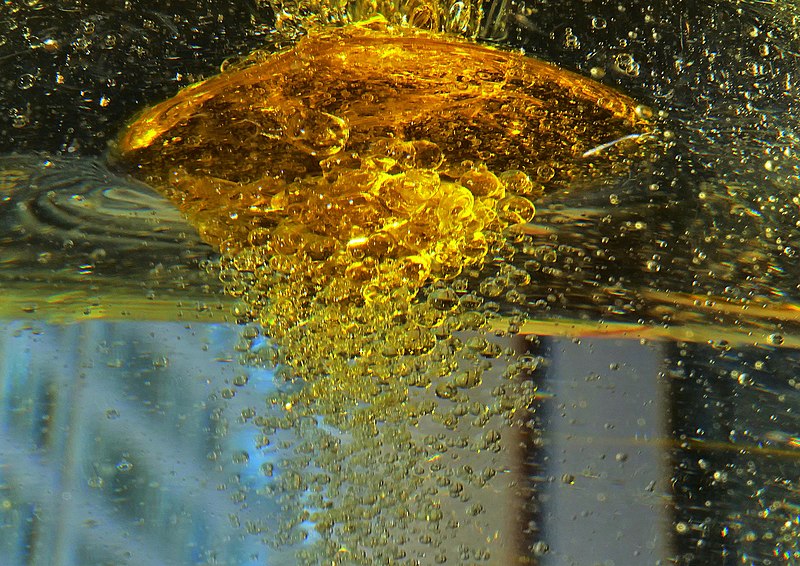Abstract
This experiment aims to demonstrate the behavior of miscible and immiscible liquids when mixed together. Miscible liquids dissolve in each other, forming a homogeneous solution, while immiscible liquids do not dissolve and form separate layers.
Introduction
When two liquids are mixed, their ability to dissolve in each other depends on their chemical properties. Miscible liquids have similar polarities or molecular structures, allowing them to form a homogeneous solution. In contrast, immiscible liquids have different polarities or molecular structures, resulting in the formation of separate layers.
Experiment Details
In this experiment, we will mix various pairs of liquids and observe their behavior to determine if they are miscible or immiscible.
Procedure
- Take two clean and dry test tubes.
- Add a small amount of the first liquid into one test tube and the second liquid into the other test tube.
- Cap the test tubes and shake gently to mix the liquids.
- Observe the appearance of the mixture.
- If the liquids form a single phase and appear uniform, they are miscible. If they form separate layers, they are immiscible.
- Repeat the experiment with different pairs of liquids to confirm the results.
Observations and Calculations
The appearance of the mixture will vary depending on the nature of the liquids:
- If the liquids are miscible, a single homogeneous phase will be observed.
- If the liquids are immiscible, they will form distinct layers, with one liquid floating on top of the other.
Conclusion
The results of this experiment demonstrate that miscible liquids dissolve in each other to form a homogeneous solution, while immiscible liquids do not mix and form separate layers.
Precautions
- Ensure that the test tubes are clean and dry before adding the liquids.
- Handle the liquids with care to avoid spills.
- Cap the test tubes securely before shaking to prevent leakage.
Short Questions with Answers
- What is the purpose of the experiment?
Answer: To demonstrate the behavior of miscible and immiscible liquids when mixed. - What are miscible liquids?
Answer: Liquids that can dissolve in each other to form a homogeneous solution. - What are immiscible liquids?
Answer: Liquids that do not dissolve in each other and form separate layers when mixed. - How can the miscibility of liquids be determined?
Answer: By observing whether they form a homogeneous solution or separate layers when mixed. - What factors influence the miscibility of liquids?
Answer: Polarity, molecular structure, and solubility of the liquids. - What is the appearance of a mixture of miscible liquids?
Answer: A single phase, uniform and homogeneous solution. - What is the appearance of a mixture of immiscible liquids?
Answer: Separate layers, with one liquid floating on top of the other. - How can the experiment be conducted to demonstrate miscibility?
Answer: By mixing different pairs of liquids in test tubes and observing their appearance. - What should be done before adding liquids to the test tubes?
Answer: Ensure that the test tubes are clean and dry. - What precaution should be taken when shaking the test tubes?
Answer: Cap the test tubes securely to prevent leakage. - Why is it important to handle the liquids with care?
Answer: To avoid spills and ensure safety during the experiment. - What does the term "homogeneous solution" mean?
Answer: A solution in which the components are uniformly distributed and indistinguishable. - What does the term "immiscible" indicate?
Answer: Inability of liquids to mix or dissolve in each other. - What is the significance of confirming the results with different pairs of liquids?
Answer: To ensure that the observed behavior is consistent and not specific to certain liquids. - How can the miscibility of liquids be useful in everyday life?
Answer: It helps in understanding solubility, designing chemical processes, and selecting appropriate solvents. - What types of liquids are commonly miscible with water?
Answer: Polar solvents such as ethanol, acetone, and methanol. - Can two non-polar liquids be miscible?
Answer: Yes, if they have similar molecular structures and attractions. - What is the role of polarity in determining miscibility?
Answer: Polar liquids are more likely to be miscible with other polar liquids due to similar intermolecular forces. - How does temperature affect the miscibility of liquids?
Answer: Temperature can influence the solubility of liquids, affecting their miscibility. - What safety precautions should be followed during the experiment?
Answer: Wear appropriate protective gear, handle chemicals carefully, and work in a well-ventilated area.
Multiple Choice Questions (MCQs)
- Which of the following best describes miscible liquids?
a) They form separate layers when mixed.
b) They dissolve in each other to form a homogeneous solution.
c) They have different polarities.
d) They are insoluble in all solvents.
Answer: b) They dissolve in each other to form a homogeneous solution. - What is the outcome when immiscible liquids are mixed?
a) They form a single phase.
b) They evaporate.
c) They form separate layers.
d) They change color.
Answer: c) They form separate layers. - Which factor primarily determines the miscibility of liquids?
a) Molecular weight
b) Temperature
c) Polarity
d) Volume
Answer: c) Polarity - What type of solvents are commonly miscible with water?
a) Non-polar solvents
b) Aromatic solvents
c) Polar solvents
d) Halogenated solvents
Answer: c) Polar solvents - How does temperature affect the miscibility of liquids?
a) Higher temperature increases miscibility
b) Lower temperature increases miscibility
c) Temperature has no effect on miscibility
d) Temperature decreases miscibility
Answer: a) Higher temperature increases miscibility
🔗 Other Useful Links
- News By Amurchem
- Free Web Development Course
- All-in-One Exam Prep Portal
- Articles by Amurchem
- Grade 12 Section
- Grade 11 Section
- Grade 10 Section
- Grade 09 Section
- Advanced Artificial Course
- Home and Online Tuition
- Labs By Amurchem
- Science Lectures By Amurchem
- Social Media Executive Course
© 2025 AmurChem. All rights reserved.






